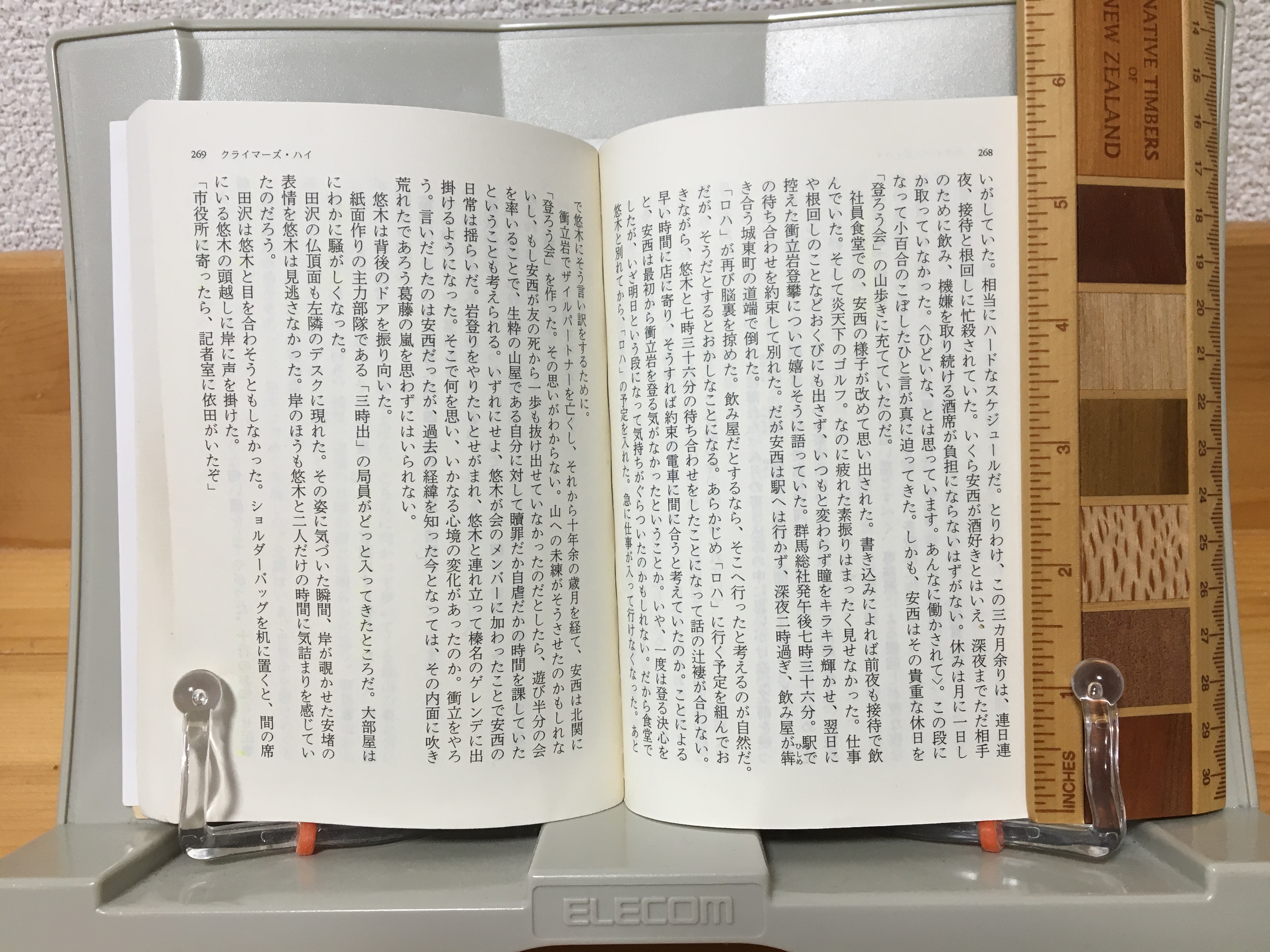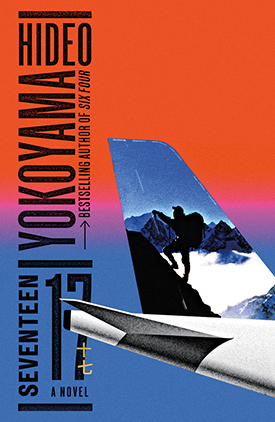Hideo Yokohama’s masterpiece Seventeen is set in a fictional newspaper company covering the real-life 1985 crash of a Japan Airlines jumbo jet in a mountainous region of Japan. The accident happened before I moved to Japan, but it is a major (well, infamous) moment in aviation history—the largest loss of life in a single plane crash ever. I haven’t met a Japanese person who isn’t familiar with the incident.
My Japanese partner happens to be an aeronautical engineer—the details of the accident are known by everyone at his company. Even though the company had no direct connection with the events of August 12, 1985, every year representatives visit Mt. Osutaka in Gunma Prefecture to pay respects to the 520 who died. I don’t think the colleague who recommended me for this translation job knew about my family circumstances, but it felt serendipitous to me. At the same time, I felt intense pressure to get it right, to express Yokoyama’s version of the events of that August day in a way that would resonate with the English language reader. My partner, on the other hand, merely remarked that thanks to his input I could at least be confident that all the airplane-related jargon would be technically correct. And I’m sure it was. But then I hadn’t counted on the rock-climbing jargon, and the newspaper company jargon, and the names of remote mountain peaks . . .
What readers may not realize is that literary translators don’t deal solely with the language of a novel. They spend a significant amount of their time on research, and some books call for more than others.
What readers may not realize is that literary translators don’t deal solely with the language of a novel. They spend a significant amount of their time on research, and some books call for more than others. Translating Seventeen was one of the most research-heavy translation jobs I’ve had to date. I had to check every detail, making sure names, places, timelines were perfectly accurate, as the story was based on such a well-known incident. For a start, a geographical location far away from my home, near Tokyo, made place names a challenge. Towns and villages weren’t difficult to find, but names of mountain trails and rock faces were elusive. It was important to discover first whether they had ever been translated into English before, and then whether that translation was the official version or not. Sometimes I came across different English translations of the same name. If something hadn’t ever been translated, I had to decide whether to just transcribe the Japanese or come up with an equivalent English name of my own. A huge responsibility. (To my horror, I recently met a resident of Gunma Prefecture who pointed out a slight error in my transcription of a place name, and that night I couldn’t sleep for shame.)
But in the end the hardest part to translate was something I didn’t even read until around six months later. I’d submitted the first draft of my translation, and the manuscript was well into the editing process, when an email arrived from my editor: “Mr. Yokoyama has kindly agreed to write a preface for the novel. Would you mind translating it?” I opened the attachment and immediately sighed. The piece was short, and under normal circumstances wouldn’t have taken much time, but there was no Word or even PDF file format. It was an inky photocopy in vertical typeface, many of the more intricate kanji characters reduced to a blurry blot on the page. As anyone who reads Japanese or similarly logographic languages will understand, without access to a copy and paste function or an online dictionary, looking up unknown words is tricky at the best of times. Without knowing the character, it’s hard to predict its pronunciation, and it therefore follows that an alphabetically organized dictionary is useless. In my early days of translation, I was often reduced to counting pen strokes, then poring over lists until I could spot the correct character. But even in the case of familiar characters, if they’re handwritten poorly, or as in this case, not much more than an ink splotch, reading turns into a guessing game. Clues can be found in the general shape of the blot, and of course context is a huge pointer. Experience helps but it can be a time-consuming task.
The advent of e-book readers with their installed dictionary has helped considerably. Unknown characters can be looked up in seconds. But it is the zoom-in function that is the real godsend. When I began translating in the mid-2000s, my set-up was a tiny pocket-sized paperback and a strong pair of reading glasses. One of the most thoughtful gifts my partner ever gave me was a magnifying glass.
This photo is of the Japanese paperback edition of Seventeen (original title Climber’s High) sent to me by the Japanese publisher. I use a bookstand to keep the pages open as I work, but the arms of the stand are too far apart for a pocket-sized paperback. I have to wedge something in in one side. In this picture I have included a ruler for scale. Happily, by the time I finished working on Seventeen, it was already 2017 and so I had electronic backup, but in the early days this was not yet available.

Returning to that foreword for Seventeen: I found myself checking and rechecking that I was understanding correctly. I’d already known before I started work on the book that when Japan Airlines Flight 123 crashed in Gunma Prefecture, Hideo Yokoyama had been a young reporter at a local newspaper, and that like Kazumasa Yuuki, the central character of Seventeen, he had been responsible for covering the crash. What I learned as I read these new words was that Hideo Yokoyama had been one of the very first reporters to trek up an unclimbed mountain ridge and witness firsthand the horror of the aftermath. I read most carefully the passage where he describes spending the night surrounded by unidentifiable body parts, just to be absolutely sure I’d caught his meaning correctly. Now I understood why it had taken him seventeen years to overcome being haunted by the crash enough to put it into words. In a way, I was glad that I hadn’t realized this before. I had translated the book believing that Yokoyama, like Yuuki, had covered the crash from the relative distance of the newsroom. Had I known otherwise, I would have been too concerned about the author’s own voice and the reality of his experience. Instead I had been able to allow the fictional characters in his novel to speak for themselves.
After Seventeen was released in the UK in the spring of 2018, I was invited to be interviewed by BBC Radio. In preparation, I wrote to Hideo Yokoyama, now eager to hear more of his personal experiences. (The content of his responses deserves a whole other article.) Suffice it to say, he answered all my questions brilliantly and graciously—by photocopy. But this time I knew not to be surprised. I’d read in an interview that he habitually uses a desktop computer made by a company that stopped manufacturing computers in 1999. I figured I should be grateful I didn’t have handwritten notes to decipher. I pulled out my magnifying glass and got to work.
Louise Heal Kawai grew up in Manchester, England, but Japan has been her home since 1990. She has translated a variety of novels and short stories from Japanese, including Mieko Kawakami’s novella Ms Ice Sandwich, Seicho Matsumoto’s A Quiet Place, and Yakuza Moon: Memoirs of a Gangster’s Daughter by Shoko Tendo.
Born in 1957, Hideo Yokoyama worked for twelve years as an investigative reporter with a regional newspaper north of Tokyo before becoming one of Japan’s most acclaimed and bestselling fiction writers. Seventeen is his second novel to be translated into English.

